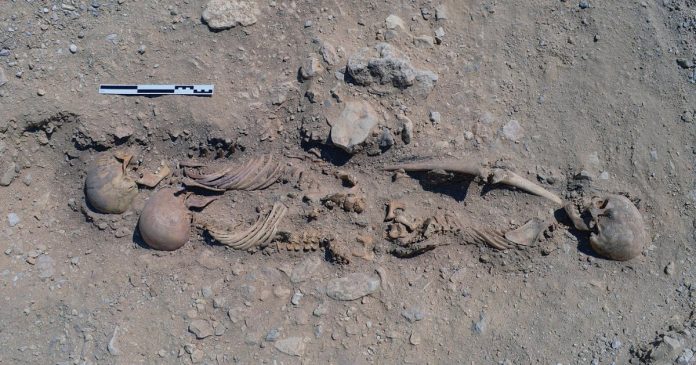The Myth of Akhetaten’s Mysterious Plague
For decades, historians speculated that a deadly epidemic swept through Akhetaten — the short-lived capital of Pharaoh Akhenaten, founded in the mid-14th century BCE. The “Plague of Akhetaten” was often invoked to explain the city’s rapid abandonment shortly after Akhenaten’s death.
Akhenaten, formerly Amenhotep IV, is known for introducing monotheistic worship of the sun god Aten and establishing a new royal capital, Akhetaten (modern Amarna), to distance himself from Egypt’s traditional religion centered on Amun. Yet within just twenty years, the city was deserted — a mystery that scholars long linked to disease.
New Research Challenges the Epidemic Theory
A recent study published in the American Journal of Archaeology by Dr. Gretchen R. Dabbs and Dr. Anna Stevens re-examines this long-standing assumption. Titled “Mortality Crisis at Akhetaten? Amarna and the Bioarchaeology of the Late Bronze Age Mediterranean Epidemic,” the paper uses archaeological, bioarchaeological, and demographic evidence to assess whether the city suffered an epidemic at all.
The researchers analyzed nearly 900 burials excavated between 2005 and 2022 across Amarna’s main cemeteries — the South Tombs, North Cliffs, North Desert, and North Tombs. Their investigation compared the site’s data with known patterns from ancient cities affected by epidemics, looking for signs such as mass burials, disordered graves, and demographic irregularities.
Key Findings: Social Stress, Not Epidemic Disease
The results are striking. Skeletal remains showed stress markers — including low adult height, spinal trauma, and enamel growth disruptions — but these point to chronic social and economic hardship, not infectious disease.
Only a handful of individuals displayed signs of illness like tuberculosis, and there was no evidence of large-scale pathogen activity. Most burials were carefully arranged and contained textiles, mats, or grave goods — the opposite of the chaotic mass graves expected during an epidemic.
Demographic modeling also revealed that the total number of interments fits normal mortality rates for a settlement of Akhetaten’s size and lifespan. Even the few multiple burials discovered seem to reflect deliberate cultural practices — often pairing adult women with children — rather than emergency measures during a crisis.
Orderly Abandonment, Not Sudden Collapse
Archaeological data further suggest that Akhetaten’s decline was gradual and organized. The city appears to have been vacated systematically: homes were emptied, belongings collected, and small populations continued to live there after Akhenaten’s death.
This pattern contradicts the idea of a catastrophic outbreak. Instead, the researchers propose that political and religious changes following the pharaoh’s reign — not plague — caused the city’s fall.
Why the Plague Theory Persisted
The idea of a “Plague of Akhetaten” gained traction because of circumstantial evidence:
- Hittite texts mention a deadly epidemic brought by Egyptian captives.
- Amarna Letters refer to outbreaks in nearby cities like Megiddo and Byblos.
- Royal deaths during the Amarna period fueled speculation of widespread disease.
- Statues of Sekhmet, the goddess of pestilence, erected by Amenhotep III, seemed to symbolize divine wrath.
However, as Dr. Dabbs explains, these sources never actually mention an epidemic in Akhetaten itself. “This is one of those cases where something makes logical sense — until you test it critically,” she notes.
Re-evaluating Ancient Narratives
The study highlights the importance of integrating scientific data with historical interpretation. While disease may have affected the broader region — as Hittite prayers suggest — the evidence from Akhetaten does not match the expected archaeological or demographic signatures of a plague.
Dr. Dabbs and Dr. Stevens caution against conflating texts from different times and places to explain localized events. Their work underscores a larger truth: ancient urban collapses often stem from complex social, political, and environmental causes rather than singular catastrophes.
Conclusion
The new findings dismantle the long-standing myth of a plague that destroyed Akhetaten. Instead, they reveal a city shaped by devotion, hardship, and eventual political transition — not by epidemic death.
As archaeological science advances, such studies continue to separate historical fact from enduring legend, reminding us that even ancient mysteries deserve modern scrutiny.
Sources
“Akhetaten plague may never have happened.” Archaeology Mag.com (Oct 2025).

